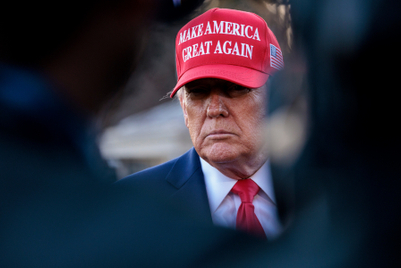
Editor's note: We'll be featuring 2017 Outlook content from the latest issue of Campaign all this week. Subscribers can see it all now in the emagazine.
James Harding, director of news at the BBC, was interviewed by Sir Martin Sorrell at a WPP event in September. He said that he had a new stock answer for questions about future political outcomes. That answer: “I just don’t know.” Post-Brexit and pre-Donald Trump, who could blame him?
Much of the sharp intake of breath at both of those surprise outcomes has led people to rightly question opinion polls and to observe the danger to human sensibility of living in the echo chambers of social—and all other—media that has pushed us all to a world of self-validating media consumption.
All this is true and needs serious consideration, but my own conclusion (not that of WPP or GroupM) from these seemingly unlikely events is that reality took a back seat in 2016 in two respects. First, the rise in the creation and dissemination of fake news is a threat that has to be addressed. Second, that slow growth and persistent austerity for large parts of the world and huge numbers of people is a reality that may be underrated by all of us in marketing who think purpose and ‘experience’ are a greater benefit than functional value.
Fake news can only be addressed if four forces align. First, the financial incentives to the fakers have to be choked off. Second, the (inadvertently complicit) distribution platforms of fake news need to balance safe harbour with verification. Third, ‘real news’ outlets need to apply circumspection to the reporting of fake news, lest its juxtaposition with their own masthead creates its own accidental validation. Finally, the funding model for real journalism and the pursuit of truth need to be seen as a collective responsibility. It’s quite possible that the underlying problem with fake news is the decline in resources available for real news.
As for brands, ‘purpose’ cannot be a substitute for value and a recognition of the real choices made by real people. The provision of that value — a combination of price and quality — would seem to be an imperative for 2017, when it seems that individual economic fortunes in much of the world are unlikely to improve. For the vast majority of the population the only meaning of stock market highs and the news value of business billionaires is as a beacon of income inequality. ‘What’s in it for me?’ may truly be a cry of necessity not a cipher of selfishness or greed.
This is no short-term challenge. We are at a frightening point on the arc of innovation. This is the point at which technology destroys more value than it creates, especially for those people whose jobs it renders redundant. In the long term, technology has always created new employment and new demand, but it does so after a lag that can last a generation or more. Right now almost all the new jobs created (those that can’t be automated) pay less than the ones they replaced. A number of electorates have already decided that the short-term fix is protectionism: break the machines or raise the tariffs to restrict the movement of capital and/or labour. Brexit and the US election outcome point pretty firmly in that direction.
Long term, the answer lies elsewhere: in education for all that prepares us for the jobs of tomorrow not yesterday, and the free movement of people and capital that incentivises inclusion, diversity and innovation.
One last theme links the marketing and political narratives of 2016 and the decisions we take in 2017 and beyond. The pause button seems to have been hit on a decades-long path to borderless trade and global brands. Global and regional trade deals are under threat; the European Union itself may be compromised; global brand owners are increasingly feeling competitive pressure from local brands every bit as much as they do from one another.
In totality, 2017 will be the year in which we strive to come to terms with the paradox of executing on local and individual needs and doing it through the prism of the most global and pervasive communications and commerce platforms ever created. The history of marketing is that of ingenuity; that of great journalism is of shining light in dark places. These are times that demand the application of ingenuity for good and for the brightest light to illuminate the darkest places.
 Rob Norman is chief digital officer of GroupM. Rob Norman is chief digital officer of GroupM. |


.jpg&h=334&w=500&q=100&v=20250320&c=1)


.png&h=334&w=500&q=100&v=20250320&c=1)




.png&h=334&w=500&q=100&v=20250320&c=1)



.jpg&h=268&w=401&q=100&v=20250320&c=1)

.png&h=268&w=401&q=100&v=20250320&c=1)


